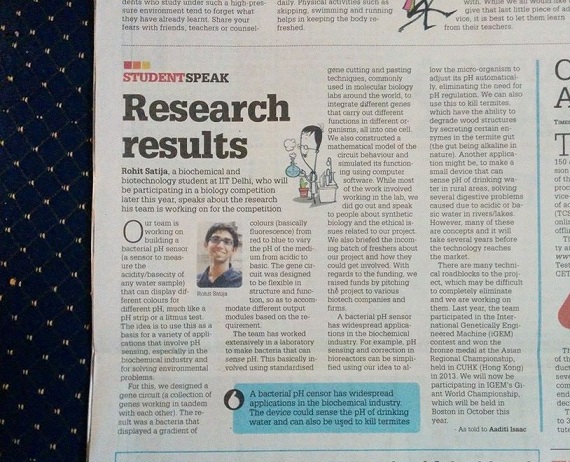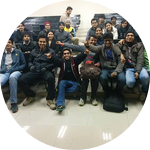About This Project
In today's ironical modern age, air polluting automobiles and industries seem to be inevitable.These green house oxides play a vital role in the catastrophic global warming threat. Our project aims to build a mechanical table top model to reduce the harmful nitrogen and sulphur oxides from the exhausts to safer by-products by using a synthetically engineered E.Coli.Ask the Scientists
Join The DiscussionWhat is the context of this research?
With increase in the number of automobiles and industries, the emission of harmful greenhouse gases increases thereby leading to global warming. These emissions contribute to around 45% of the total global air pollution Therefore a process is required to reduce the gases to pollution free exhausts. Though there are many chemical reactor models present , they are neither economical nor efficient. Therefore we plan to build an environment friendly model that would overcome both the limitations.This model, complete in itself can be scaled to different sizes corresponding to the volume of emission, thereby making it compatible to all the possible exhaust mechanisms.
What is the significance of this project?
The effects of GHG has attracted the attention of the major stake holders of the world who believe that the need of the hour is to combat the levels of the gases emitted. Though the problem has been identified no further steps have been taken as any environmental action requires a change in the existing technology thereby increasing the investments.
Usually application of these actions lead to an increase in growth and manufacturing productivity. Our model is distinct as it neither does not require the change in the existing technology nor does it affect the industrial outcomes..
What are the goals of the project?
1)Synthetically Engineer E.Coli for Nitric Oxide (NOx) and Sulfur Oxides (SOx, SO2) reduction.
2)Design of a prototype for the reduction of NOx and SOx from the exhaust gases-A small Heat Exchanger and a Bioreactor.
Budget
The funds would be used for building the model:
- As we are using RDT(recombinant DNA technology) so we'll be needing restriction enzymes for our clonings.
- we have designed the primers and we need to order primers from IDT.
- Also we have to send our cloned plasmid for sequencing for the confirmation.
- We need to design bioreactor to assay the enzyme
Meet the Team
Team Bio
iGEM IIT Delhi is a team of 20 Undergraduate students from Chemical Engineering and Biochemical Engineering & Biotechnology Departments in IIT Delhi, who are working night and day to tackle this ever-growing problem of SOx and NOx emissions.We are also working with graphic designers, film producers and marketing consultants for a project that excels beyond the science and to achieve maximum output in the given interval of time.
Lab Notes
Nothing posted yet.
Press and Media
To know more about our project contact us through these:Facebook:https://www.facebook.com/groups/1415804038657732/?fref=ts
Twitter:https://twitter.com/iGEM_IIT_Delhi
When US Secretary of State John Kerry visited Indian Institute of Technology (IIT), Delhi, a newspaper interviewed kunal gupta iGEM 2014 member.here is the link of detailed interview.
http://www.deccanherald.com/content/422944/kerry-v...
iGEM 2013 team leader Rohit Satija was interviewed by economic times.

Additional Information

iGEM IIT delhi team introducing freshers to whole new paradigm of synthetic biology .


Project Backers
- 2Backers
- 4%Funded
- $65Total Donations
- $32.50Average Donation
